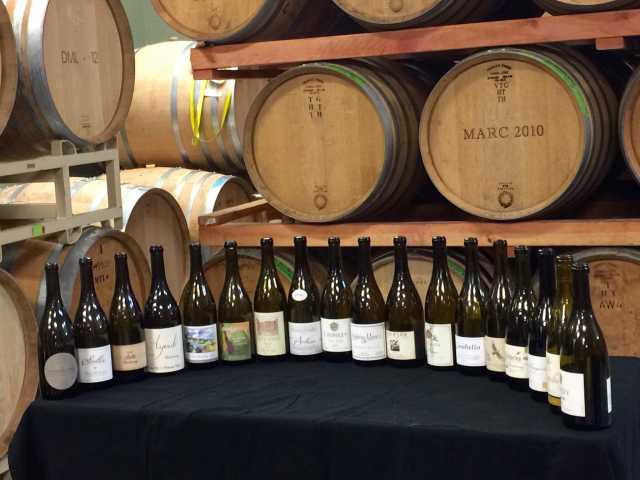In preparation, some background reading from the Pinot Camp folks. Full text here: http://oregonpinotcamp.com/wp-content/uploads/2015/06/Hunting-the-Great-White-2015.pdf?48b446
The Chardonnay Renaissance in Oregon
As noted earlier, the once dominant white grape in Oregon, Chardonnay, was eclipsed by Pinot
gris in the early 2000s. However, Oregon Chardonnay plantings are once again on the rise as the
state’s Chardonnay offerings gather recognition and acclaim.
By pioneering Pinot gris and Pinot noir in the United States, Oregon had the great fortune of
being able to set the national standard. However, an American Chardonnay style was well in
place by the time Oregon wines started to gain visibility on the national stage in the 1980s. The
established American style was based on warm-climate viticulture, and the ultra-ripe, soft flavors
that resulted were often further augmented by new oak, residual sugar and the more buttery
strains of malolactic.
In contrast, Oregon’s cool-climate Chardonnays were often comparatively mineral and structured
in their youth, requiring time to reveal themselves. Many vintners stayed the course to make
Chardonnay with a distinctively Oregon character, and this approach has proven its worth; those
wines have shown themselves to age magnificently.
However, others attempted to emulate the “established” American Chardonnay style, deacidifying,
aging in high percentages of new oak and using fatter strains of malo. These
approaches were not always harmonious with the essential mineral character of cool-climate
viticulture.
A complicating factor in the Oregon Chardonnay story has been clone. The Willamette Valley’s
founding clone was the Draper Selection brought by David Lett in 1965. Draper Selection traces
directly to the “Old Wente” clones of Chardonnay imported from France in the early 1900s.Many of the Willamette Valley’s pre-1974 plantings of Chardonnay are Draper Selection.
In the mid 1970s, new high-yielding selections of Chardonnay became available from California.
UC Davis clones 4 and 5 together became known as Clone 108. Like the Draper selection, Clone
108 can make good wines if properly managed for yield. The natural inclination of 108 is to
produce huge, late-ripening clusters. In a warm climate like Napa’s, this can lend needed acidity.
In our climate, the acidity can be very much out-of-balance if yields are not vigilantly tended.
In 1984 and 1988, a series of Chardonnay clones were brought into Oregon from Burgundy.
These clones had been selected in the 1960s by a branch of the French Ministry of Agriculture
whose office was in Dijon, and have numbers like 76, 95 and 96. These “Dijon clones” bloom
and ripen two to three weeks earlier than others, and have added more options to match plantings
to soil, site and winemaking style.
Today, the breadth of available Chardonnay selections has created new excitement among
Oregon Chardonnay growers. Planted acreage is once more beginning to climb.
The combination of attentive vineyard practices and a greater availability of clones is fueling a
renaissance of Chardonnay made from both older and newer plantings. Winemakers are
experimenting with various coopers and stainless steel, wild and commercial yeasts, lees stirring
and extended barrel aging.
There are styles that emphasize fruit through cool fermentations, stainless steel fermentation and
aging and inhibited malolactic. Others vinify for texture through the use of barrel fermentation,
malolactic fermentation and lees aging (sometimes with lees stirring regimens). Some wineries
enjoy success blending both styles together in the making of their Chardonnay. In either case, the
goal has become to make wines that reflect their place.
To an American palate that has become fatigued with blousier versions of Chardonnay, Oregon
offers many refreshing alternatives. Good Oregon Chardonnays have the same transparency as
Pinot noir, and like Pinot noir have the ability to eloquently reflect site, place and vintage. Our
cool, marine climate was never suited to growing the pillowy style of Chardonnay. The
expansion of a subset of American wine drinkers who appreciate more food friendly, mineral structured
wines has led more and more consumers to explore the Oregon style.
